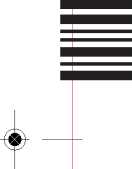Tranexamic Acid 100Mg/Ml Solution For Injection

PACKAGE LEAFLET: INFORMATION FOR THE USER
Tranexamic acid 100 mg/ml
solution for injection
Tranexamic acid
r-\
Read all of this leaflet carefully before you are given this medicine because it contains important information for you.
• Keep this leaflet. You may need to read it again.
• If you have any further questions, ask your doctor or nurse.
• If you get any side effects, talk to your doctor or nurse. This includes any possible
side effects not listed in this leaflet. See section 4.
V_J
What is in this leaflet
1. What Tranexamic acid 100 mg/ml solution for injection is and what it is used for
2. What you need to know before you are given Tranexamic acid 100 mg/ml solution for injection
3. How to use Tranexamic acid 100 mg/ml solution for injection
4. Possible side effects
5. How to store Tranexamic acid 100 mg/ml solution for injection
6. Contents of the pack and other information
1. WHAT TRANEXAMIC ACID 100 mg/ml SOLUTION FOR INJECTION IS AND WHAT IT IS USED FOR
Tranexamic acid 100 mg/ml solution for injection contains tranexamic acid which belongs to a group of medicines called antihaemorragics; antifibrinolitics, aminoacids.
Tranexamic acid 100 mg/ml solution for injection is used in adults and children above one year of age for the prevention and treatment of bleeding due to a process that inhibits blood clotting called fibrinolysis.
Specific indications include:
• Heavy periods in women
• Gastrointestinal bleeding
• Haemorrhagic urinary disorders, further to prostate surgery or surgical procedures affecting the urinary tract
• Ear, nose, or throat surgery
• Heart, abdominal, or gynecological surgery
• Bleeding after you have been treated with another medicine to break down blood clots.
2. WHAT YOU NEED TO KNOW BEFORE YOU ARE GIVEN TRANEXAMIC ACID 100 mg/ml SOLUTION FOR INJECTION_
Do not use Tranexamic acid 100 mg/ml solution for injection
• if you are allergic to tranexamic acid or any of the other ingredients of this medicine (listed in section 6),
• if you have currently a disease leading to blood clots,
• if you have a condition called 'consumption coagulopathy' where blood in the whole body starts to clot,
• if you have severe kidney problems (impairment (risk of accumulation),
• if you have a history of convulsions.
Due to the risk of brain swelling and fits, intrathecal and intraventricular injection and intracerebral application are not recommended.

If you think any of these apply to you, or if you are in any doubt at all, tell your doctor before taking Tranexamic acid 100 mg/ml solution for injection.
Warnings and precautions
Tell your doctor if any of these apply to you to help him or her decide if

Tranexamic acid 100 mg/ml solution for injection is suitable for you:
• If you have had blood in your urine Tranexamic acid 100 mg/ml solution for injection may lead to urinary tract obstruction.
• If you have a risk of having blood clots.
• If you have excessive clotting or bleeding throughout your body (disseminated intravascular coagulation), Tranexamic acid 100 mg/ml solution for injection may not be right for you, except if you have acute severe bleeding and blood test have shown the process that inhibits blood clotting called fibrinolysis is activated.
• If you have had convulsions, Tranexamic acid 100 mg/ml solution for injection should not be administered. Your doctor must use the minimal dose possible to avoid convulsions following treatment with Tranexamic acid 100 mg/ml solution for injection.
• If you are on a long-term treatment with Tranexamic acid 100 mg/ml solution for injection, attention should be paid to possible disturbances of colour vision and if necessary the treatment should be discontinued. With continuous long-term use of tranexamic acid solution for injection, regular ophthalmologic examinations (eye examinations including visual acuity, colour vision, fundus, visual field etc.) are indicated. With changes to your eyesight, particularly with diseases of the retina, your doctor must take a decision after consulting a specialist on the necessity for the long-term use of tranexamic acid solution for injection in your case.
Other medicines and Tranexamic acid 100 mg/ml solution for injection
Please tell your doctor or pharmacist if you are taking or have recently taken any other medicines, including medicines obtained without a prescription, vitamins, minerals, herbal medicines or dietary supplements.
You should specifically tell your doctor if you take:
• other medicines that help blood to clot called antifibrinolytic medicines
• medicines that prevent blood clotting, called thrombolytic medicines
• oral contraceptives.
Pregnancy and breast-feeding
Ask your doctor for advice if you are pregnant or breast-feeding before taking Tranexamic acid 100 mg/ml solution for injection.
Tranexamic acid is excreted in human milk. Therefore, the use of Tranexamic acid 100 mg/ml solution for injection during breast-feeding is not recommended.
Driving and using machines
No studies have been performed on the ability to drive and use machines.
3. HOW TO USE TRANEXAMIC ACID 100 mg/ml SOLUTION FOR INJECTION
Use in adults
Tranexamic acid 100 mg/ml solution for injection will be given to you by slow injection into a vein.
Your doctor will decide the correct dose for you and how long you should take it. .../...
THE FOLLOWING INFORMATION IS INTENDED FOR HEALTHCARE PROFESSIONALS ONLY:
Dosage in adults
Unless otherwise prescribed, the following doses are recommended:
1. Standard treatment of local fibrinolysis:
500 mg (1 ampoule of 5 ml) to 1,000 mg (1 ampoule of 10 ml or 2 ampoules of 5 ml) tranexamic acid by slow intravenous injection (= 1 ml/minute) two to three times daily
2. Standard treatment of general fibrinolysis:
1,000 mg (1 ampoule of 10 ml or 2 ampoules of 5 ml) tranexamic acid by slow intravenous injection (= 1 ml/minute) every 6 to 8 hours, equivalent to 15 mg/kg body weight (BW)
Use in children
If Tranexamic acid 100 mg/ml solution for injection is given to a child from one year, the dose will be based on the child's weight. The doctor will decide the correct dose for the child and how long he/she should use it.
In children from 1 year, for current approved indications, the dosage is in the region of 20 mg/kg/day.
Use in elderly
No reduction in dosage is necessary unless there is evidence of renal failure.

Use in children
If Tranexamic acid 100 mg/ml solution for injection is given to a child from one year, the dose will be based on the child’s weight. Your doctor will decide the correct dose for the child and how long he/she should take it.
Use in elderly
No reduction in dosage is necessary unless there is evidence of renal failure.
Use in patients with kidney problems
If you have a kidney problem, your dose of tranexamic acid will be reduced according to a test performed on your blood (serum creatinine level).
Use in patients with liver problems
No reduction in dosage is necessary.
Method of administration
Tranexamic acid 100 mg/ml solution for injection should only to be administrated slowly into a vein.
Tranexamic acid 100 mg/ml solution for injection must not be injected into a muscle.
If you are given more Tranexamic acid 100 mg/ml solution for injection than the recommended dose
If you are given more Tranexamic acid 100 mg/ml solution for injection than the recommended dose you may experience a temporary fall in blood pressure.
Talk to a doctor or pharmacist immediately.
For healthcare professionals, further information regarding dosage is inserted at the end of this leaflet.
4. POSSIBLE SIDE EFFECTS
Like all medicines, this medicine can cause side effects, although not everybody gets them.
Side effects reported with Tranexamic acid 100 mg/ml solution for injection are:
Important side effects to look out for:
You must get urgent medical help if you have any of the following symptoms.
You may be having an allergic reaction:
• you have difficulty breathing
• your face or throat swell
• your skin develops a severe rash
Other possible side effects:
Common (may affect up to 1 in 10 people)
• effects on the stomach and intestines: nausea, vomiting, diarrhoea
Uncommon (may affect 1 to 10 in 100 people)
• effects on the skin: rash
Not know (frequency cannot be estimated from the available data)
• feeling tired with hypotension (low blood pressure), especially if the injection is given too quickly
• blood clots
• effects on the nervous system: convulsions
• effects on the eyes: vision disturbances including impaired color vision
Reporting of side effects
If you get any side effects, talk to your doctor, pharmacist or nurse. This includes any possible side effects not listed in this leaflet. You can also report side effects directly via the Yellow Card Scheme at: www.mhra.gov.uk/yellowcard.
By reporting side effects you can help provide more information on the safety of this medicine.
5. HOW TO STORE TRANEXAMIC ACID 100 mg/ml SOLUTION FOR INJECTION
Keep this medicine out of the sight and reach of children.
Do not use this medicine after the expiry date which is stated on the label and the carton after EXP The expiry date refers to the last day of that month.
This medicinal product does not require any special storage conditions.
Use immediately once opened. Discard any unused portion.
Do not use this medicine if you notice any visible signs of deterioration like discolouration or precipitation.
6. CONTENTS OF THE PACK AND OTHER INFORMATION
What Tranexamic acid 100 mg/ml solution for injection contains
• The active substance is tranexamic acid. Each ml of the solution for injection contains 100 mg of tranexamic acid. Each ampoule of 5 ml of solution contains
500 mg of tranexamic acid and each ampoule of 10 ml of solution contains 1,000 mg of tranexamic acid.
• The other ingredients are water for injections and hydrochloric acid (for phi-adjustment).
What Tranexamic acid 100 mg/ml solution for injection looks like and contents of the pack
Tranexamic acid 100 mg/ml solution for injection is a clear, colourless solution for intravenous use, filled in clear glass ampoules (Type I).
Tranexamic acid 100 mg/ml solution for injection is available in the following pack sizes
• Pack of 5 ampoules, each containing 5 ml of solution
• Pack of 5 ampoules, each containing 10 ml of solution
Not all pack sizes may be marketed.
Marketing Authorisation Holder
STRAGEN UK Ltd
Castle Court, 41 London Road, Reigate, Surrey RH2 9RJ Phone: +44 (0)870 351 87 44, Email: info@stragenuk.com


Manufacturer
Haupt Pharma Wulfing GmbH, Bethelner Landstr. 18 D-31028 Gronau, Germany
This leaflet was last revised in 11/2014.
Use in patients with kidney problem
In renal insufficiency leading to a risk of accumulation, the use of tranexamic acid is contraindicated in patient with severe renal impairment. For patient with mild to moderate renal impairment, the dosage of tranexamic acid should be reduced according to the serum creatinine level:
|
Serum creatinine |
Dose intravenous |
Administration | |
|
micromole/L |
mg/10 ml | ||
|
120 to 249 |
1.35 to 2.82 |
10 mg/kg BW |
Every 12 hours |
|
250 to 500 |
2.82 to 5.65 |
10 mg/kg BW |
Every 24 hours |
|
> 500 |
> 5.65 |
5 mg/kg BW |
Every 24 hours |
Use in patients with hepatic impairment
No reduction in dosage is necessary.
Method of administration
Tranexamic acid 100 mg/ml solution for injection is only to be injected slowly (= 1 ml/minute) into a vein.
Tranexamic acid 100 mg/ml solution for injection must not be injected into a muscle.
22595800